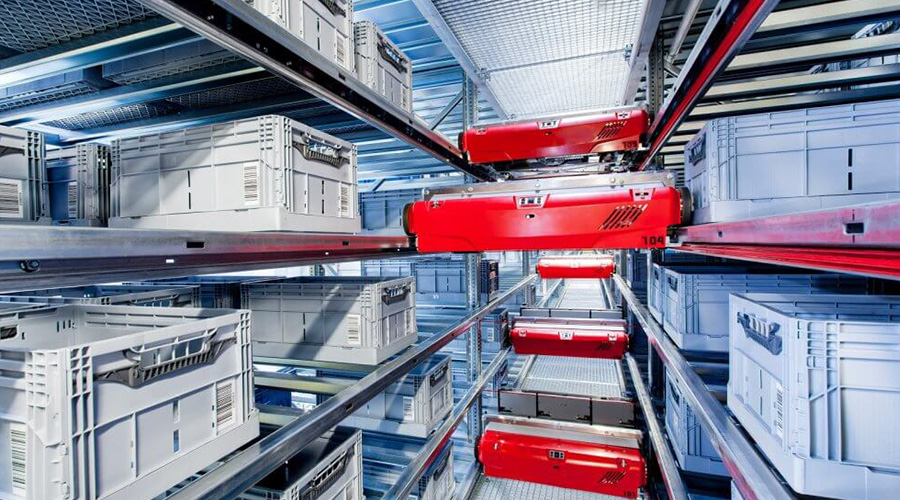Automated Storage and Retrieval Systems (ASRS) are designed to improve the efficiency of picking processes. It is a set of equipment and controls that automatically handle, store, and retrieve goods as needed with precision, accuracy, and speed. They originated in the 1960s, first focused on huge pallet loads, but as technology has progressed, the loads handled have gotten smaller.
Automated storage and retrieval systems have several advantages.
- Reduced variable costs: By eliminating the need for manual labor for processes like picking, storing, assembling, and inventory replenishment, automated storage and retrieval systems reduce the variable cost of operations. These costs fluctuate, with overtime, benefits, and payroll taxes all contributing to the total cost of manual labour.
- Increased Safety: Whether because of distraction, fatigue, hunger, psychological or emotional stress, one thing is certain: Humans make mistakes. Humans can mistake while operating heavy machinery such as forklifts, reach trucks. By replacing employees with machines that do not get weary or distracted, AS/RS systems allow you to remove part of the unpredictable human element from your operation. This may have a huge beneficial influence on a business by boosting safety and, as a result, minimizing accidents and damage to products, buildings, and equipment
- Efficient use of space: In warehouses and distribution facilities, effective shelving and item grouping are critical. To keep operations running smoothly, raw materials, work-in-progress, and completed items inventories must be replaced on a regular basis. Effective space use is critical for warehouses and distribution facilities to maintain a healthy bottom line. When opposed to facilities that require ample aisle space for human employees and equipment such as forklifts to pass through, most AS/RS systems necessitate smaller aisles. Narrower aisles allow warehouses and distribution centers to store more goods and resources without having to expand their facilities.
- Increased Accuracy, Productivity, and Efficiency: Humans, as previously said, are prone to making mistakes. Errors will happen no matter how well-trained or vigilant you are. These mistakes can disrupt operations and cause inefficiency, in addition to posing a safety risk or causing product damage.
Despite their advantages, AS/RS systems have a few significant disadvantages that businesses should consider before investing.
- High initial investment: Automated storage and retrieval systems are expensive to install and implement. The initial capital outlay can be enormous, and installation necessitates extensive infrastructure upgrades. The cost-benefit analysis can demonstrate a good ROI over time if a firm is seeking for a long-term solution, however AS/RS solutions may not be realistic for enterprises hoping for a rapid return on their investment. The high initial capital commitment is frequently prohibitive for smaller businesses.
- Not ideal for varied tasks: AS/RS equipment follows predetermined paths and is best suited to jobs that are regular, predictable, and repetitive. Because of the downtime necessary to re-program and re-train the AS/RS system to transport new items following each transition, they're not suited for situations where diverse items are handled at various periods, such as a warehouse that handles various items by season.
- Maintenance: AS/RS, like any other piece of equipment or technology, will require normal maintenance and repair from time to time. This will very certainly result in some operating downtime when repairs and maintenance are carried out. Although it is still less expensive than the continuous expenses of hiring and employing more employees, the costs of maintenance should be included into every new system implementation.
